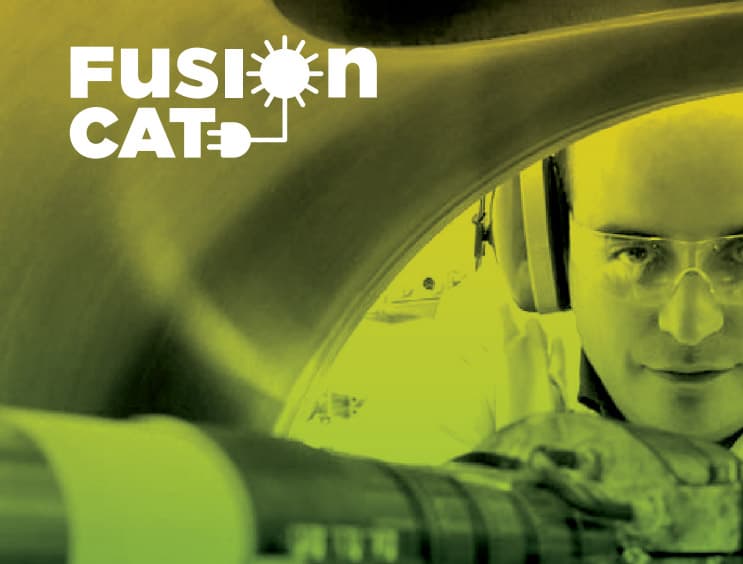Nuclear fusion is one of the few technologies with the potential to satisfy the increasing energy demand by means of sustainable, secure and low-emission energy sources. In the research project FusionCAT, the Catalan fusion community comes together to respond to those scientific and technological challenges.
FusionCAT will last three years and is funded by the Action Plan RIS3CAT. About 40 researchers from universities and research centers participate in the project. The consortium is coordinated by Barcelona Supercomputing Center (BSC) and composed of Foundation b_TEC Campus Diagonal-Besòs (BTEC), Technology Centre of Catalonia (EURECAT), Institute of Materials Science of Barcelona (ICMAB-CSIC), Chemical Institute of Sarrià (IQS), Catalonia Institute for Energy Research (IREC), and Universitat Politècnica de Catalunya (UPC).
“This project allows us to start an active community in the field of nuclear fusion in Catalonia”, said the ICREA researcher Mervi Mantsinen, FusionCAT Coordinator and leader of the Fusion Research Department of the BSC. Professor Mantsinen expressed her optimism and satisfaction with the results of the project kick-off meeting, which was held in January and had 23 attendees.

The FusionCAT partners contribute towards the consortium their expertise in different fields, from fusion reactor technologies to the study on plasma or experimental physics. The project will develop initiatives in the following areas:
- Full fusion reactor integrated modelling
Plasma and fusion reactors are systems of great physical, numerical and computational complexity. Their modelling implies the integration of many physical processes and multiple time and space scales. Therefore, in order to understand the behaviour of the plasma, it is essential to couple multiple physics. To this end, the following tasks will be performed: development of multiphysics codes for the modelling of these systems, their experimental validation, and their integration in the production chains that will be used while ITER is functioning.
- Neutronics, tritium breeding and operational fuel cycle
The future fusion reactors opt for a cycle based on a huge generation of neutrons in the plasma by means of breeding blankets, which boost the production of neutrons. Furthermore, in order to achieve an efficient energy production, the project will study the impact of the neutrons in the reactor, the combustion cycle, the optimization of the connection between the breeding blanket and the tritium extraction system, and hydrogen recovery together with the fuel cleaning.
- Fusion reactor studies
Finally, the FusionCAT project will conduct several studies on technologies that are applicable to the reactor’s design, such us the use of magnets based on High-Temperature Superconductivity (HTS) materials, the assessment of the strength of the materials used in the construction of the reactor, and the implementation of an energy cycle based on supercritical CO2.
In this way, FusionCAT collaborates in fusion research and development, as is being done by other more consolidated projects such as the European fusion research consortium EUROfusion, funded by the European research and innovation programme Horizon 2020; the international project on fusion energy research ITER; the Fusion for Energy (F4E) organisation; and other Spanish fusion projects under the umbrella of CIEMAT.
About FusionCAT
The FusionCAT project, file number 001-P-001722, has received 50% of its funding, €1,923,463.66, from the European Regional Development Fund in the context of the Operative Programme FEDER of Catalonia 2014-2020, with support from the Government of Catalonia.

